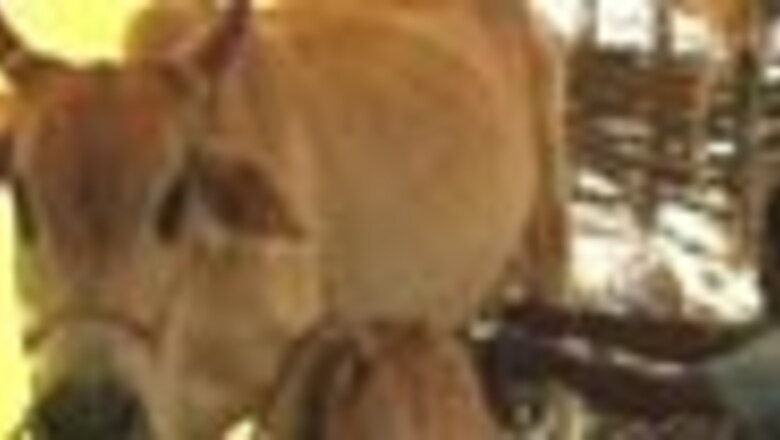
views
Washington: A researcher at Northern Arizona University (NAU) has a cow dung collection dating back to thousands of years, that might reveal past climate patterns.
The researcher is Jim Mead, director of NAU's Laboratory of Quaternary Paleontology, who is an expert on researching dung for clues about ancient life.
The collection includes dung from modern animals to prehistoric ground sloths and 40,000-year-old mammoths.
"Dung is accurate for carbon dating," said Mead. "It's a data set that typically disappears in the fossil record. All we typically get are bones, but with dung we get biochemistry. We can tell a lot about the climate by analyzing what plants the animal ate," he explained.
Through the digested plants, scientists can tell what was going on in the environment at the time, such as the amount of rainfall that was occurring. The data also helps researchers pinpoint when different changes in the environment took place.
"The plant remains in the dung allow us to determine the mosaic of plants in the local plant community. The community structure changes with changes in climate," said Mead.
Mead's research also includes tracking and comparing ancient dung DNA samples to learn about an animal's gender, food and water sources, air pollen, parasites and community structure during the Ice Age. The data allows him to determine when and how an animal evolved and became extinct.
The significance of Mead’s research work is evident as molecular biologists in Denmark, Australia and Canada are using pieces from NAU's dung collection to compare its DNA to dung they are finding.
"To understand ancient dung, one must have a modern comparative collection, and we have one of the best there is," said Mead. "It is extremely rare to have preserved fossil dung—yet we have the best and most there are in any collection,” he added.
An important finding that Mead has been able to derive from his analysis of the ancient dung samples is the time when bison emerged in the Grand Canyon area.
Previous research suggests that bison dispersed into the Grand Canyon area more than 11,000 years ago. But with the dating from dung, Mead indicates that they roamed the plateau at least 23,000 years ago.


















Comments
0 comment